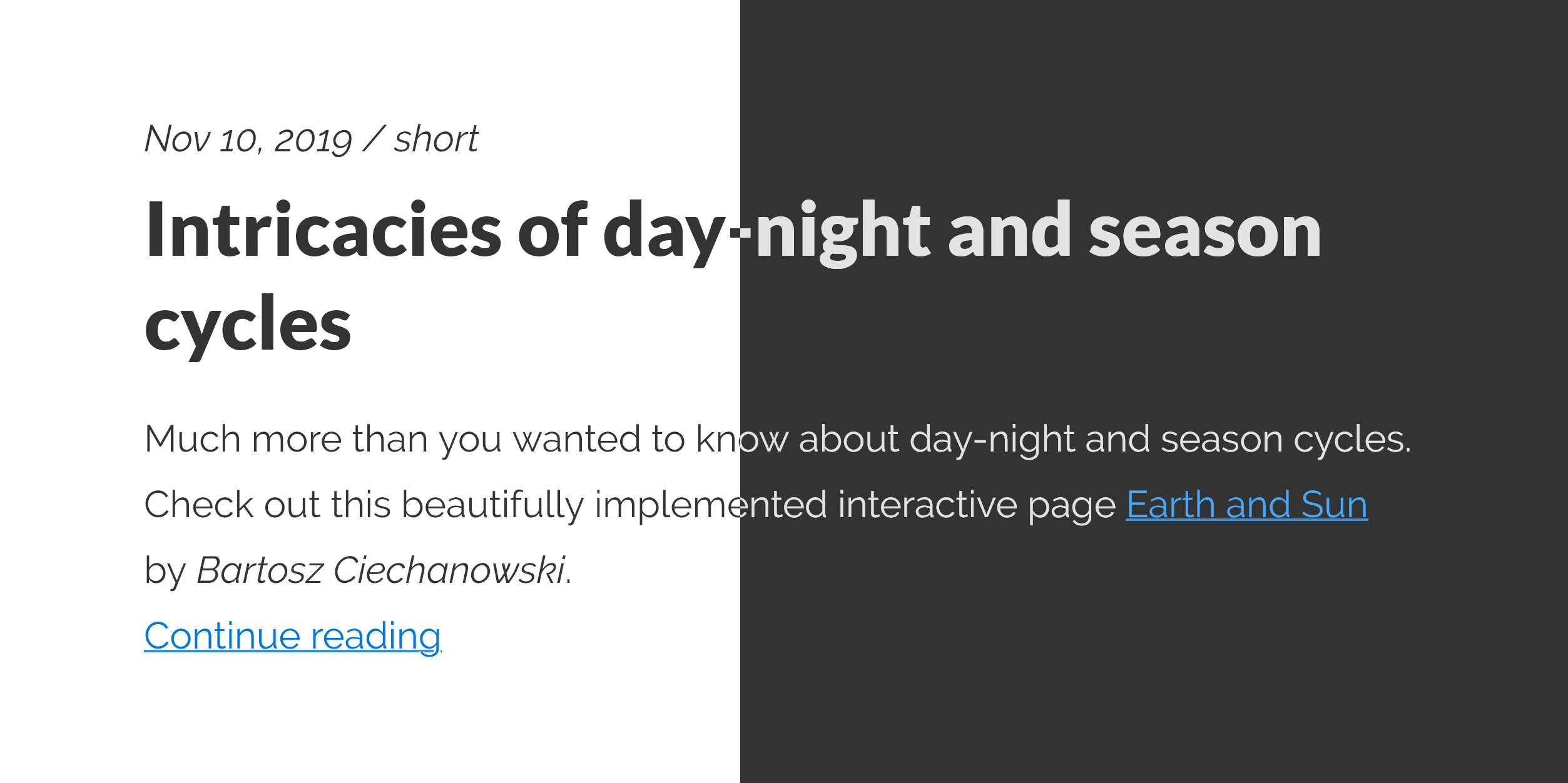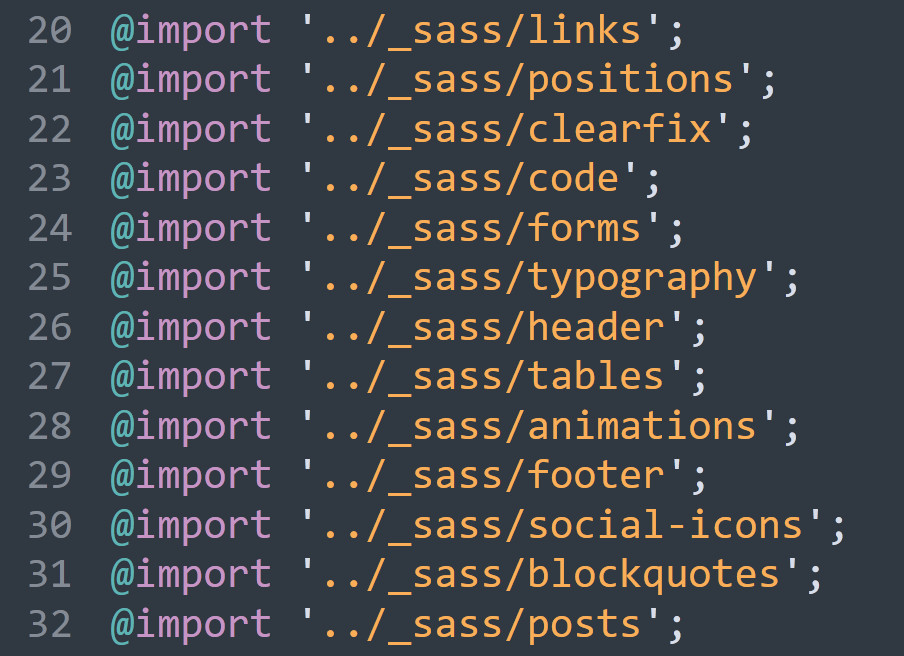I’ve implemented the dark theme for this blog. An endeavour for 2-3 hours that has visible results. A satisfying project, I invite everyone with a light-theme-only blog to try.

CSS Tricks, of course, has this topic thoroughly covered in their Complete Guide to Dark Mode on the Web. I’ll describe what I’ve done in this particular blog and why.
I’m using @media (prefers-color-scheme: dark) { ... } CSS media query which lets me use OS-level user preferences. I chose not to support manual toggling between modes because of two reasons:
- Implementation involves JavaScript swapping CSS classes and storing state in Local Storage–a harder effort than I wanted for this quick-win project
- If a user has strong preferences about the dark mode, I imagine such a user already has a way of controlling the interface. Such as a browser plugin that changes the theme, e.g. Dark Reader.
As dark mode gains momentum, I think major browsers will display a toggle between modes (not only in Dev Tools) making the effort of creating this toggle myself moot.
Implementation
This blog uses a modified Pixyll theme that has 32 SASS files that get compiled into one big CSS file.

This otherwise reasonable divide-and-conquer approach bites me in the ass here, as I needed to insert the media-query block 17 times. For each style, I wanted to look different when dark. Here’s the actual commit.
I could instead place all dark mode styles in one such file, but then I’ll lose the handy separation these files provide. Also, in the future, if I change a light mode style, the proximity of the corresponding dark mode style will remind me to change it as well. Something I might otherwise forget to do and test for. If there is a better way, please tell me about it.
So, that’s basically it: adding media-query styles and selecting particular colors that look good on dark background.
Oh, while we’re on a technical topic, I want to boast a little. This site got a 100/100 performance score at Google’s PageSpeed Insights for desktop and 97 for mobile. I can mostly attribute it to Jekyll itself and a little bit to my tweaks using locally hosted fonts instead of Google Fonts’ CDN. I host this blog on GitHub Pages for free, you can use the same GitHub Pages-friendly process I’m using.